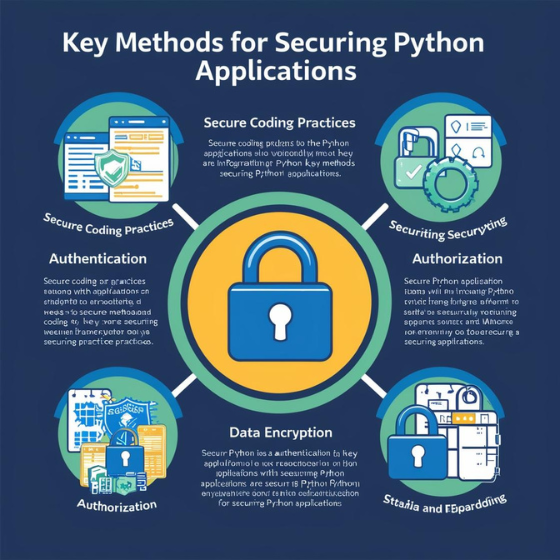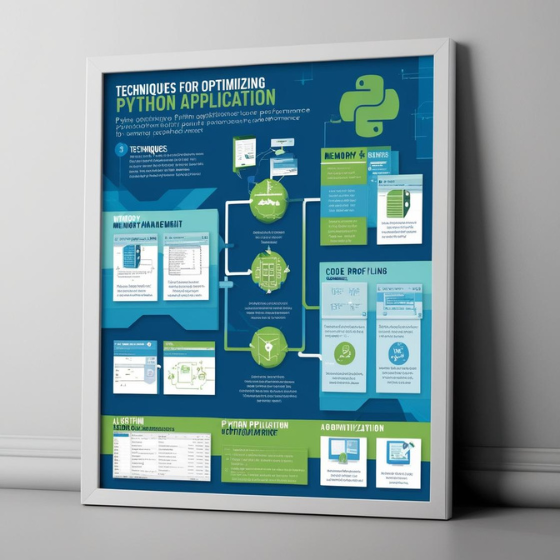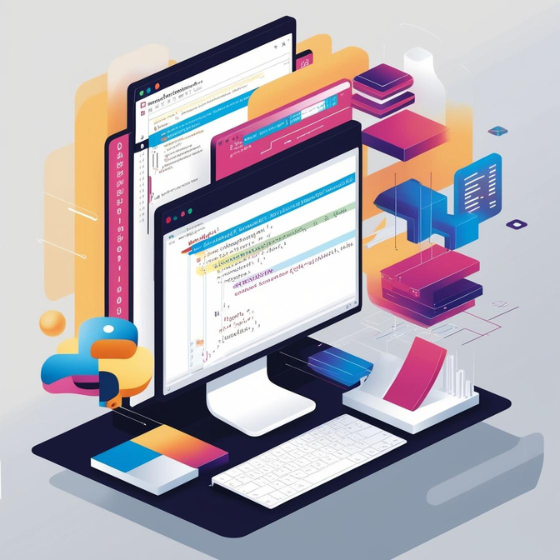How to Secure Python Applications: A Comprehensive Guide
In an increasingly interconnected digital world, ensuring application security is paramount. A study by IBM revealed that the average cost of a data breach in 2023 reached $4.45 million, emphasizing the importance of robust security practices. Python, known for its simplicity and versatility, powers countless applications across industries. But with great popularity comes great responsibility: securing your Python applications is no longer optional—it’s essential.
This blog delves into how to secure Python applications, offering actionable steps and best practices to safeguard your code, data, and user trust.
Why Application Security Matters
Cyberattacks have become more sophisticated, targeting vulnerabilities in software to access sensitive information. Whether you’re developing a small web application or a large-scale enterprise solution, ignoring security can lead to:
- Data Breaches: Loss of user data or intellectual property.
- Reputation Damage: Users may lose trust in your brand.
- Legal Consequences: Fines and lawsuits from failing to comply with data protection regulations.
Knowing how to secure Python applications ensures your software is resilient against potential threats and compliant with industry standards.
1. Keep Dependencies Updated
Python applications often rely on third-party libraries and frameworks. While these tools accelerate development, they can introduce vulnerabilities if not maintained.
Steps to Secure Dependencies:
- Regularly Update Libraries: Use tools like
pip list --outdatedto identify outdated packages. - Verify Trusted Sources: Only install libraries from reliable sources, such as PyPI (Python Package Index).
- Monitor Vulnerabilities: Utilize tools like Dependabot or Snyk to track vulnerabilities in dependencies.
By keeping dependencies up-to-date, you eliminate known vulnerabilities that attackers might exploit.
2. Use Secure Authentication Methods
Authentication is often the first line of defense in application security. Implementing secure practices ensures only authorized users access your system.
Best Practices for Secure Authentication:
- Hash Passwords: Use libraries like
bcryptorArgon2for secure password hashing. - Enable Multi-Factor Authentication (MFA): Add an extra layer of security to user accounts.
- Use Token-Based Authentication: Implement standards like OAuth2 or JWT (JSON Web Tokens).
A secure authentication system not only protects user accounts but also prevents unauthorized access to your Python application.
Need help securing your authentication system? Check out Sodio’s development services for expert solutions.
3. Sanitize User Inputs
One of the most common vulnerabilities in web applications is injection attacks, where malicious users exploit unsanitized input fields.
Steps to Mitigate Injection Attacks:
- Validate Input: Ensure all user inputs meet expected criteria (e.g., length, format).
- Escape Special Characters: Use libraries like
html.escapeor ORM tools to prevent SQL injection. - Implement Whitelisting: Accept only valid inputs rather than rejecting malicious ones.
By sanitizing user inputs, you safeguard your application against a range of vulnerabilities, including SQL injection and cross-site scripting (XSS).
4. Secure Data Transmission
Data transmission over the internet is vulnerable to interception and manipulation. Securing this data ensures confidentiality and integrity.
Key Practices for Secure Transmission:
- Enforce HTTPS: Use SSL/TLS certificates to encrypt data during transmission.
- Encrypt Sensitive Data: Use libraries like
cryptographyto encrypt data at rest and in transit. - Avoid Hardcoding Secrets: Store API keys, passwords, and other sensitive information in environment variables or secure vaults.
Securing data transmission builds user trust and complies with privacy laws such as GDPR and CCPA.
5. Limit Access with Role-Based Permissions
Not every user or system component should have full access to your application. Implementing role-based access control (RBAC) minimizes risk by enforcing the principle of least privilege.
How to Implement RBAC:
- Define roles and permissions tailored to your application needs.
- Use frameworks like
Flask-SecurityorDjango-Guardianto manage roles. - Regularly audit permissions to ensure compliance.
RBAC ensures that even if a user account is compromised, the damage remains limited.
6. Monitor and Log Activity
Monitoring application activity helps detect suspicious behavior before it escalates into a breach.
Tips for Effective Monitoring:
- Set Up Logging: Use Python’s built-in
loggingmodule or external tools like Loggly. - Analyze Logs: Continuously monitor logs for unusual patterns, such as repeated login attempts.
- Automate Alerts: Integrate monitoring systems with alerts to notify the team of potential issues.
Effective monitoring not only enhances security but also provides valuable insights into application performance.
7. Protect Against DoS and DDoS Attacks
Denial-of-service (DoS) and distributed denial-of-service (DDoS) attacks aim to overwhelm your application, causing it to crash or become unresponsive.
Ways to Mitigate DoS/DDoS:
- Rate Limiting: Control the number of requests a user can make in a given timeframe.
- Use a CDN: Content delivery networks like Cloudflare help absorb traffic spikes.
- Deploy Firewalls: Application firewalls block suspicious traffic before it reaches your server.
These measures ensure your application remains available even under high traffic.
8. Perform Regular Security Audits
A proactive approach to security involves identifying vulnerabilities before attackers do.
How to Conduct Security Audits:
- Automated Scans: Use tools like Bandit or SonarQube to identify weaknesses in your codebase.
- Penetration Testing: Hire security experts to simulate real-world attacks.
- Code Reviews: Conduct peer reviews to ensure adherence to secure coding practices.
Regular audits keep your Python applications resilient and up-to-date against evolving threats.
9. Educate Your Team
Security is a shared responsibility. Ensuring every team member understands best practices reduces the likelihood of human error.
Steps to Build a Security-Aware Team:
- Conduct regular training sessions on secure coding principles.
- Share resources like Python’s official security guide.
- Foster a culture of accountability and vigilance.
When your team prioritizes security, your applications become inherently more robust.
Conclusion
Mastering how to secure Python applications is a critical skill for developers in today’s threat landscape. From managing dependencies to enforcing role-based permissions, these practices ensure your application is safe, efficient, and trusted by users.
At Sodio, we specialize in developing secure, scalable Python applications tailored to your business needs. Contact us today to explore our development services and let us help you build software that stands the test of time.







